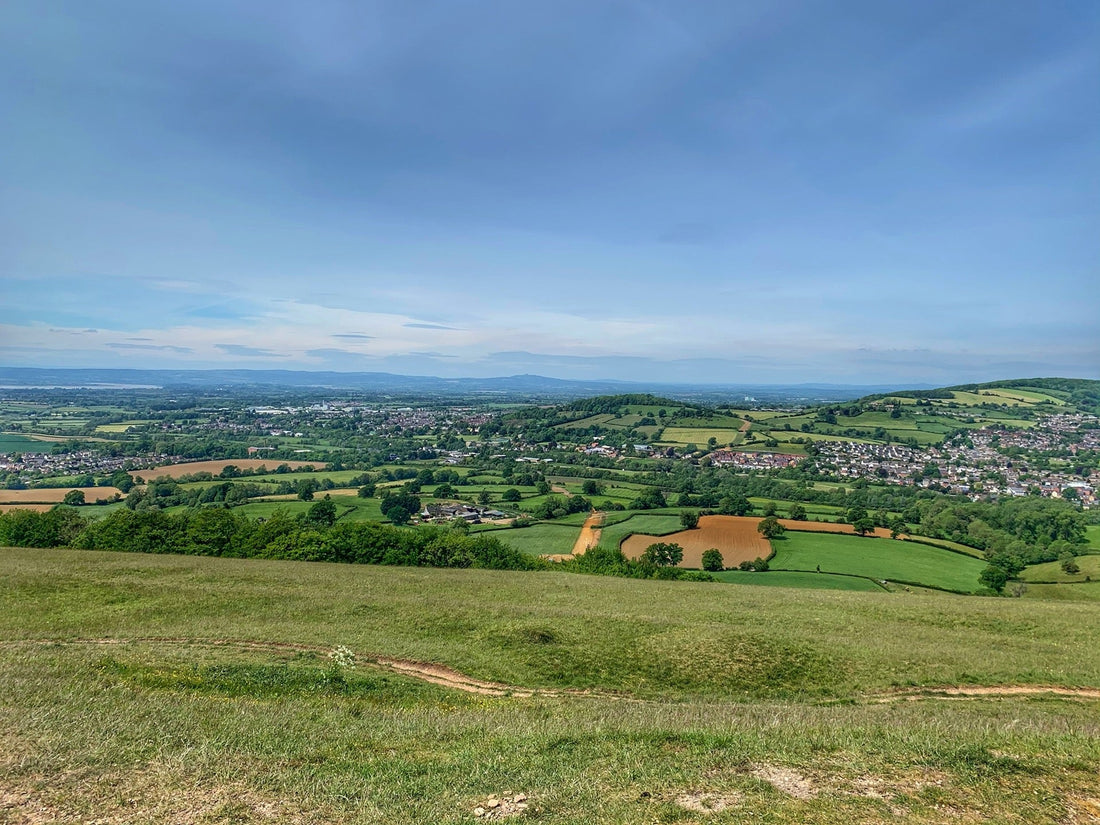
Where we used to be: Walking with my grandmother
This collection was shaped by experiences with my grandmother, and I wanted to share some of that story with you. It's a longer read, but hopefully worth it.
When I paint, I move through a process where themes and collections rise up from what’s sparked my interest, or as a way of making sense of the world. At the start of this year, I lost my grandmother, and my art became a way to process that.
She had dementia, so memory and loss were already woven into our lives long before she passed. It made me question what we truly remember. Life isn’t recalled in long stretches but in little fragments, like post-it notes, moments that overlap and blur together. In searching for her, I found newspaper cuttings from her life, listened to stories from my sisters and family, and held on to those fragments that made her who she was.

This collection ties those feelings to my way of painting. I’m so grateful that making art gives me space to pause, to capture what’s hard to put into words. I remember walking with her on the common, and she’d say: “If you’re ever on a hard walk and you’re struggling for breath but don’t want to admit it, just say, ‘Oh look at that view,’ and everyone will stop.” Just the other day on a walk I caught myself telling my son the same thing. At first it was just a story about the walks we used to do together, but then I realised it was also about life. In those moments that feel difficult, when you don’t think you can stop, sometimes what you really need is to pause, to look up, to take in the view. It’s a simple way of catching your breath, of reminding yourself that there’s beauty even in the hardest stretches.

It’s moments like that, small, tender, fleeting, that I struggle to articulate but can hold in a painting. People say I explain things well in text, but honestly its a painful struggle, painting is so easy for me. These works are about those pauses, the spaces where you catch your breath.
My grandmother was an extraordinary woman. Alongside raising six children, she poured herself into her community, serving as a district and county councillor, helping on crime prevention panels, even delivering meals on wheels. She once led a campaign to save an ancient wood near Stroud, rallying enough support for the Woodland Trust to buy it and preserve it for future generations. She was practical and determined, but also deeply rooted in kindness and care for others.


And at the same time, she was the one who nurtured my creativity. She bought me my very first set of oil paints, took me to London to see art galleries and theatre shows, and came to my graduation show. In fact she proudly bought my very first painting when I was about 15 years old. She was the person who showed me art was not just a hobby, but something worth cherishing, pursuing, and sharing. Those gestures shaped me more than I can ever fully express.
Years later, when I visited her in the care home, I told her all of this, how I was now a full-time artist, and how much it was because of her encouragement at the very beginning. She was already quite far along with dementia, so I wasn’t sure how much she could take in, but she smiled and said, “Oh, that makes me so happy.” It might not have been a fully lucid moment, but it’s one I hold onto, because it felt like she understood, even then.

Some of my strongest memories with her are not of grand moments, but of walks. We’d take her dogs up on the common in all weathers. At the top, we’d stop and try to spot her house in the distance. For years it was easier to find because of the great beech tree that stood at the front, catching the light in certain seasons. When the tree became diseased and had to be cut down, it was harder to pick out her house, as if something of her had been hidden from view.
Sometimes we’d be dropped off at the top and walk all the way down to her house for Sunday lunch, slipping on the grass in delight. Those are the memories that linger: the air, the trees, the laughter, the sense of freedom. They’ve shaped this collection in ways that are more about feeling than fact.

When lockdown ended, the common was one of the first places I went with my children. I have a photo of us there, the kids still so little, sitting on the grass. It felt like the obvious place to go, open, wide, and full of space, but it was also something more. That landscape had always meant freedom to me, a place where I felt safe as a child. Returning there with my own children, I think I was looking for that same sense of comfort and safety for them too. The common carried the memories of those walks with my grandmother, but it also became a space for new memories, layered with theirs.


When I look back, I realise how much of her lives in my work. These paintings hold memory and landscape together, blurred, shifting, overlapping, just like recollection itself. They are a way of honouring the quiet lessons she gave me, the walks we shared, and the fragments of her that I still carry.
I know these paintings are personal to me, they hold fragments of my grandmother, our walks, and the stories I carry. But that’s the joy of painting. They are not literal representations, not fixed or exact. They hold space for blurring, for overlap, for the way memory bends and shifts. And in that space, they can become something else entirely.
Perhaps they might remind you of your own moments, a place you once stood, a person you loved, or simply a time you stopped to catch your breath. That’s what I find so magical about art: it begins in one person’s experience, but it doesn’t stay there. It opens out, becoming part of others’ stories too, layering and blending like memories themselves.
In a way, it feels strange that after she is gone, I’m talking about her now, sharing her through this work. But it also feels right, that what sparked connection in me might spark something different, yet just as meaningful, in you.
I feel that this collection, like memory itself, will continue to shape and develop, with new pieces emerging as moments and reflections find their place.
See the "Where We Used To Be" collection here
